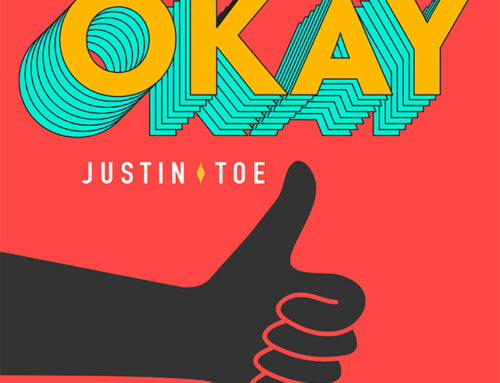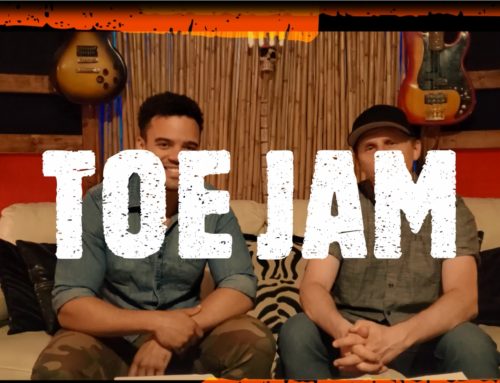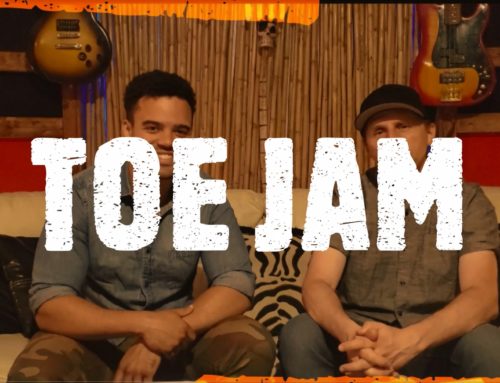Justin’s recently released music video, “Back Where I Belong”, has gathered plenty of praise for its cinematic quality and its underlying story and emotion. But where did that story come from and what inspired Justin to use it for the video? “The video,” said Justin, “was based on a short story I wrote, which itself was based on the merging of my own personal story from college – which did not involve basketball – with the stories I had read of a few other individuals who had endured career-ending sports injuries and other such things.”
Justin plans to tell his personal story a bit down the line, but in the meantime here is the short story, written in the form of a newspaper article, that inspired the music video:
*********************************
“Back Where He Belongs: The Comeback of a Lifetime”
A few years ago star basketball player Dustin Waggoner’s biggest problem was choosing which university to sign with. Some of the nation’s premiere college basketball programs were fighting for him. Several perennial top twenty-five teams had already offered him a scholarship and dozens of schools had heavily recruited him. Dustin had broken his high school’s all-time scoring and assists records, been named to the All-State team, and was honored as the Class AAA Most Valuable Player.
Beyond all of those accolades though, there was the feeling of being “the man”, the most famous person in his hometown; a local hero who little kids looked up to and others his age aspired to become. He had everything in the palm of his hand.
And then he had nothing.
Or at least that’s what it seemed like to Dustin.
Nearly two years ago, the high school star known for his infectious work ethic in practices and his affable smile toward everyone he met was involved in a near-fatal car crash; the victim of a drunk driver who failed to stop at an intersection. He suffered a collapsed lung, multiple broken bones including a badly broken left leg, a spinal injury, and a variety of other significant internal injuries. Admitted to the hospital in critical condition, just surviving was considered a major win for Dustin and his family.
And then the long road to recovery began.
Dustin faced a monumental rehab program that was centered on the ultimate goal of getting him able to walk again, a process that was expected to take many months and the final result of which was far from a guarantee.
Jeff Smith, a physical therapist/trainer, has been leading his recovery.
“It was an agonizing ordeal for him”, said Smith. “It would have been for anybody. But I think especially for him since he was used to being a star athlete and then all of a sudden he couldn’t even walk.”
Dustin admits as much, saying that the change in his life was so huge, he couldn’t help but find himself trying to live in the past; staring at old pictures of himself with his awards, at old newspaper clippings of his heroics, whatever he could do to recapture the glory that was very recent but somehow seemed like ages ago. He hated what he had become and how dependent he was on others. He felt like he was robbed of everything that made him who he was and who he was destined to become – a major college basketball player. It had been his dream for so long and was right there in front of him; so close he could reach out and touch it. And then, in a matter of seconds, it was yanked away from him.
It took time for Dustin to let go of the past and embrace his new reality, one that would require all of his physical, mental, and spiritual strength. The road to recovery was hard, but Dustin persevered, inspired by the support of his mother and sister as well as the prospect – no matter how remote – that he might someday be able to play basketball again.
Of course, all of the high-profile basketball programs that used to salivate over his ability are distant memories; the extent of his injuries will never allow him to be the top-level athlete he used to be. But at some point along the road of his long, painful recovery, that became all right with Dustin. He realized that just being able to get back on the court again – any court – would be an amazing feeling because he’d be able to play the game he loved.
After achieving the major milestone of walking on his own without the use of crutches, Dustin set out to do more extensive training. He ended up pushing himself further than anyone would have expected; to the point where he was able to participate in a walk-on tryout for a local community college team. Dustin made the cut and will join the team as a walk-on for this upcoming season.
Though his original dream may have been to play for and against top-level basketball teams with 20,000-plus fans in attendance and games broadcast on national television, Dustin says his new dream of making a comeback to the court is “even more meaningful because of the experiences I’ve had to go through to make it here and what’s driving me to do this.”
And what specifically is driving him? “It’s my love for the game of basketball that I’ve been playing since I was a little kid,” says Dustin. “And to show that there’s always a chance to achieve what you’re shooting for – no matter how unlikely it seems sometimes – if you keep pushing and have your faith, your family, and a love for what you’re working toward.”
*********************************
Watch the video again!
Listen to Justin on Spotify!
Download on iTunes/Apple Music!







Leave A Comment